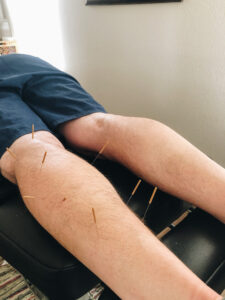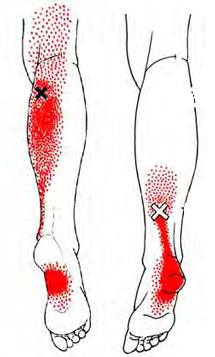Written By: Dr. Haley Harvey, DC
One of my absolute favorite issues to treat with dry needling is heel/foot pain! [To learn more about what dry needle therapy is- click here!]

Many people (sometimes accurately but often not) refer to this pain as plantar fasciitis. True plantar fasciitis is inflammation of the connective tissue linking the heel bone to the toe bones- causing pain in the heel and the bottom of the foot. Often caused by repetitive stress to the ligament from excessive activity such as running, walking, or jumping.
In my experience, MOST people who believe they have plantar fasciitis actually don’t! What they are experiencing is muscle dysfunction from trigger points, causing pain and altered biomechanics in the lower leg and foot. Trigger points are taught and painful bands of muscle tissue or fascia.

When trigger points are present within musculature, they often refer pain away from the actual area of dysfunction. This is especially evident when it comes to pain around the heel. Some of the biggest contributors to plantar fasciitis type pain or heel/foot pain are the muscles of the posterior lower leg- the gastrocnemius and soleus. Most commonly, in my clinical experience, trigger points in the gastrocnemius and soleus refer pain to the lower leg around the achilles tendon, heel, and bottom of the foot. Examination determines exactly where treatment is necessary of course.
Usually, people respond well with a quick decrease in pain. After a day or two of possible muscle soreness, the heel pain begins improving. The good inflammation caused by dry needle therapy helps to heal the dysfunctional tissue for a full 72 hours after treatment! Heel/foot pain usually resolves fully 3-10 visits depending on contributing lifestyle factors for each patient. Specific stretches, exercises, and adjunct at home therapies such as heat or ice accompany treatment to make sure proper biomechanics are restored. I love treating heel pain with dry needling because results are awesome and lasting!
If you know someone with plantar fascitis &/or heel pain tag them in this post, we can help!!!
